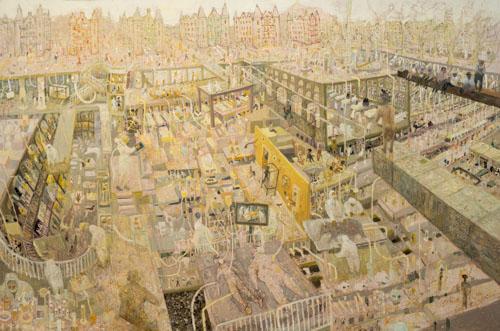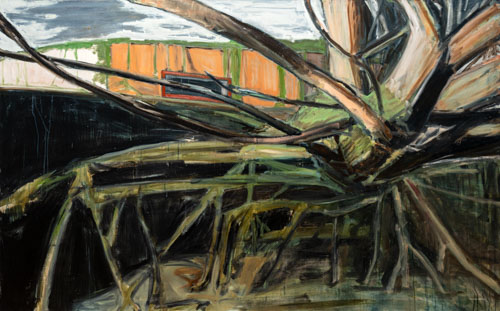
Ask an Artist!
Ever wondered how artists find inspiration? How they create their work? Or even how to earn a living? To celebrate this year’s John Moores Painting Prize at the Walker Art Gallery, students from local secondary schools were invited to ask some of the prizewinning artists their burning questions. Congratulations to Kevin in Year 7 at Cardinal Heenan School, who asked the winning question….

Robbie Bushe, The Neanderthal Futures Infirmary, 2020
'How do you handle the pressure of making a mistake?'
Let’s see how they answered…
Robbie Bushe said:
Hi Kevin,
That’s a great question. Over the years I’ve learned to build in how to work mistakes - which are inevitable. I usually make an extensive under drawing before I paint which I constantly adjust. I work in layers of paint so it is possible to revise by over painting what’s underneath. The real pressure comes when, after a good start, things start to go horribly wrong. As I start to panic, it all come crashing down. I try to mitigate this by always having a least two paintings on the go at the same time. So when one starts to slip through my fingers, I can regroup on the other. It takes the pressure off. Usually though, mistakes occur in works I have not planned or developed the idea or composition well enough and I’m ‘winging it’. 9 times out of 10 they fall by the wayside.I hope you enjoyed the exhibition Kevin.

Stephen Lee, March, 2020
Stephen Lee said:
Thank you Kevin and year 7 for the question,
I handle the pressure of making a mistake by adopting an approach to drawing and painting where mistakes are a part of the process. This approach uses drawing as an investigation rather than a finished product. Artists from Michelangelo to Degas produced 'Studies' or sketches of say, a hand or a horse running or a dancer in motion. They are made quickly and include all of the alterations or mistakes. More recently artists such as R.B. Kitaj have used layers of drawing and paint with mistakes or changes included as process. It makes for a lively and layered visual experience.The image below is a detail of a painting where I made many changes to the figure. In fact the figure was originally looking in a completely different direction down to the ground and I didn't like it after I'd painted it! So, I had to make a decision to start again and that can take some time, thought and uncertainty.
At the top of the head there are drawing marks that defined the original head, along the back of the figure you can see a line where the figure was initially painted and under the left arm there are some drawn marks that show changes in the position of the arm.
The way I handle this kind of drastic mistake is to use many layers of paint knowing that the shapes and forms can be adapted by over-painting. Even these more serious mistakes are part of the process and I leave some of the original drawing in because it's fun to see how the image develops.
I'm used to making major changes and I'm used to the way paint can be layered so it's not an anxious decision, you get used to it. I hope that answers your question!

Steph Goodger, The Motherland, 2020
Steph Goodger said:
Kevin asks an excellent question. I had to really think about this.. My answer is in two parts:
I would say that the pressure of making a mistake is all part of the excitement of painting. If there were no risks involved, it would be very boring. In a way, as a painter, I like to set myself problems, where I am bound to make mistakes, then I have to find solutions. So mistakes are part of the process of painting.Then, the pressure can be overwhelming at the point of finishing a painting, with those all-important, tiny tweaks and touches which just nail it. But if you go too far you can upset the whole balance of a painting. It can be a very tense moment. Here you must stay calm, take plenty of time to think and (hopefully) make good decisions.
Thank you to the artists for their brilliant answers. We also asked artist Samira Addo how they cope with the pressure of making a mistake. To hear them talk about their work, check out our new digital trail.

